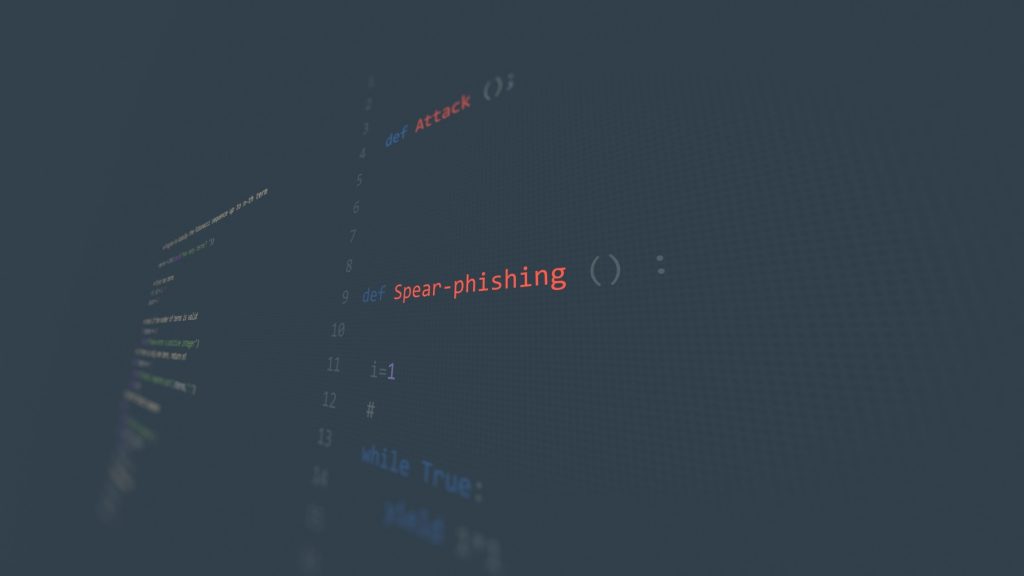In the digital world, we are exposed to various threats every day. One of the most sophisticated and effective attacks is spear phishing. Unlike regular phishing attacks, where cybercriminals send mass emails hoping to deceive a few users, spear phishing targets specific individuals or organizations.
Through detailed research, attackers create convincing deceptions that are often difficult to detect. This article introduces you to the world of spear phishing, explains the mechanisms behind such attacks, and shows how both technical and human prevention measures can help protect against these threats.

Table of contents
What Is Spear Phishing?
Does this not sound familiar? An email pops up unexpectedly in your inbox: “Dear customer, please update your bank information to ensure future payments.” Or perhaps, “As part of your tax return, we have identified irregularities. Please click on the following link…” Messages like these are often fake and belong to the category of phishing. In many cases, these attempts are relatively easy to spot, perhaps it is a bank at which you are not even a customer or it is the tax office of a country in which you have never resided.
Imagine it like real fishing: A scammer throws a bait (in this case the misleading message) into the water, hoping that a fish (i.e., us, the end users) will bite. In a similar scenario, they cast a net, hoping to catch as many fish as possible at once. These mass emails are often generic, as they are sent to thousands of people.
But there is a more sophisticated form of phishing called spear phishing. In this case, you can imagine the scenario as if a fisherman were specifically on the lookout for a certain fish, perhaps a particularly large or valuable one, and tried to catch just this one fish with a targeted spear throw. In the digital ocean, this targeted “fishing” is much more dangerous because it is often customized and specific.
Spear phishing, in short, is a targeted phishing attack on a specific person or organization. Instead of randomly sending thousands of emails to potential victims, the attackers here often have a specific idea of who they want to target.
How Does Spear Phishing Work?
A key tool used by spear phishers is the so-called OSINT – Open Source Intelligence. This is the collection of information from publicly available sources. This can be as simple as browsing social media platforms like Facebook or LinkedIn, searching company websites, or reading blogs.
OSINT often gives attackers exactly the information they need to personalize their attacks. A few spear phishing examples:
- Family ties and birthdays: For example, an attacker could find a victim’s family members and their birthdays on Facebook. With this information, they can create a fake persona and send a fake birthday invitation to trick the victim.
- Participation at conferences: LinkedIn is full of valuable information for spear phishers. For example, a victim posts about their attendance at a conference. The attacker searches for a prominent speaker at that conference, creates a fake email from that person, and writes to the victim, perhaps with an “additional handout” or a presentation attached – often containing malicious software.
- Involvement in non-profit projects: Suppose someone is involved in a private project for a non-profit organization and posts about it. An attacker could use this information, pose as an interested party or sponsor, and try to obtain confidential information or even money through this method.
It is important to emphasize that spear phishing does not just happen via email. Attackers also use phone calls, messaging apps, and even direct social interactions.
10 Methods to Protect Against Spear Phishing
The flood of digital threats is constantly on the increase, and spear phishing is a particularly difficult challenge. But there are ways and means to protect yourself against it as well.
Firstly, there are various technical approaches:
- 1. E-mail authentication processes
Modern email systems use technologies such as DKIM, SPF, and DMARC to identify and block spoofed emails, including spear phishing attempts. These mechanisms help prevent the illegal use of foreign domains to send emails.
- DKIM (DomainKeys Identified Mail): A digital signature key is used to confirm the authenticity and integrity of the e-mail. This helps recipients verify that the email actually originates from the specified domain and has not been modified during transmission. Companies use DKIM to protect their email reputation and ensure that their emails are recognized as legitimate.
- SPF (Sender Policy Framework): Determines which mail servers are authorized to send emails on behalf of a domain. This procedure helps identify spoofed sender addresses and provides a basis to verify the origin of emails. Recipients must configure their mail servers accordingly to perform SPF checks.
- DMARC: Integrates DKIM and SPF to enable consistent handling of unauthenticated emails. Through DMARC, organizations can set policies on how to handle emails that fail DKIM and/or SPF checks. Additionally, DMARC enables the sending of reports on authentication results, giving organizations visibility into the misuse of their own domain.
The above technologies are effective in preventing the misuse of legitimate domains. They assume that both sending and receiving mail servers are configured correctly. When emails are received, the effectiveness of these mechanisms depends on whether the sender has set the DNS records correctly. However, they do not protect against attacks in which attackers use their own or deceptively similar domains and configure the appropriate authentication mechanisms.
- 2. Email banner warning: In addition to automatic filtering, users should also be informed as visibly as possible if the email is external. Adding warning banners to the body or subject of external emails will alert recipients that the email is coming from outside the organization.
- 3. Anti-phishing solutions: Various software offer special protection mechanisms against phishing, for example by analyzing websites in real time or monitoring data traffic. Examples include Netcraft Anti-Phishing Toolbar or RSA FraudAction Phishing Protection.
- 4. Proxy/Firewall filter: Setting up proxy and firewall filters, including DNS filtering, can block known phishing websites and other malicious domains. These filters can also prevent access to unauthorized external email servers, further reducing the risk of phishing attacks.
- 5. Endpoint Protection: Modern endpoint protection solutions offer integrated phishing detection and prevention. This technology can identify and block suspicious links and attachments in emails, and warn users before they access potentially malicious content.
While the technical solutions are useful for simple phishing, more time is spent in spear phishing to circumvent precisely these protective measures. So, in the end, it all comes down to the human factor, especially in spear phishing. This means:
- 6. Critical eye: Every external message should be viewed with a certain degree of skepticism. This is especially true with external emails. An important first question to ask yourself is: Did I expect this message? Does the chosen communication channel make sense? Check the sender carefully as well: Is the email address and sender domain correct? Are there perhaps discrepancies in the characters used, for example a 0 (zero) instead of an O (letter). Also take a close look at the content of the message: Is the overall style unusual? Is urgent action or sensitive data being requested?
- 7. Caution with links and attachments: Do not click URLs or open attachments if you are unsure of their origin. Hovering over a link often displays the destination URL. This can help verify the legitimacy of the link and detect possible phishing attacks. However, caution is advised, as URL shorteners or other tools can be used to hide the true address, making it harder to identify the target website.
- 8. Direct communication: If you are still unsure, approach the person directly – but not through the contact in the email in question. Instead, use official contact channels that you already know.
- 9. Limiting publicly shared information: Be careful about the information you share online. Carefully consider what personal information, such as address, phone number, or date of birth, you make publicly available.
- 10. Knowledge and training: Regular training and educational activities can raise awareness of such attacks and train employees to better recognize potential threats.
In conclusion, it is better to be safe than sorry in the world of digital fishing. A trained eye and the right technical setup can help navigate the digital ocean more safely.
Conclusion
Spear phishing is a sophisticated and targeted type of phishing attack in which specific individuals or organizations are targeted. The danger of this approach lies in its personalization and the use of publicly available information to make the attack more convincing. While technical solutions such as email filters and specialized security software can provide valuable protection, the human factor remains crucial.
Educating and training individuals and employees in organizations is a critical defense mechanism against these types of attacks. Developing a skeptical and cautious approach to digital communications, especially email, is essential. Scrutinizing email content with a critical eye, verifying sender information, and avoiding clicking on unknown links or attachments all play a critical role in this regard.
Oneconsult offers different ways to test your resilience to phishing. The Penetration Testing Team helps you find security gaps in your mail system and implement measures or sensitize your employees through controlled phishing campaigns. In the Cyber Security Academy, employees can be trained on various security topics, for example with the Cyber Security Awareness Presentation.
We look forward to hearing from you:





